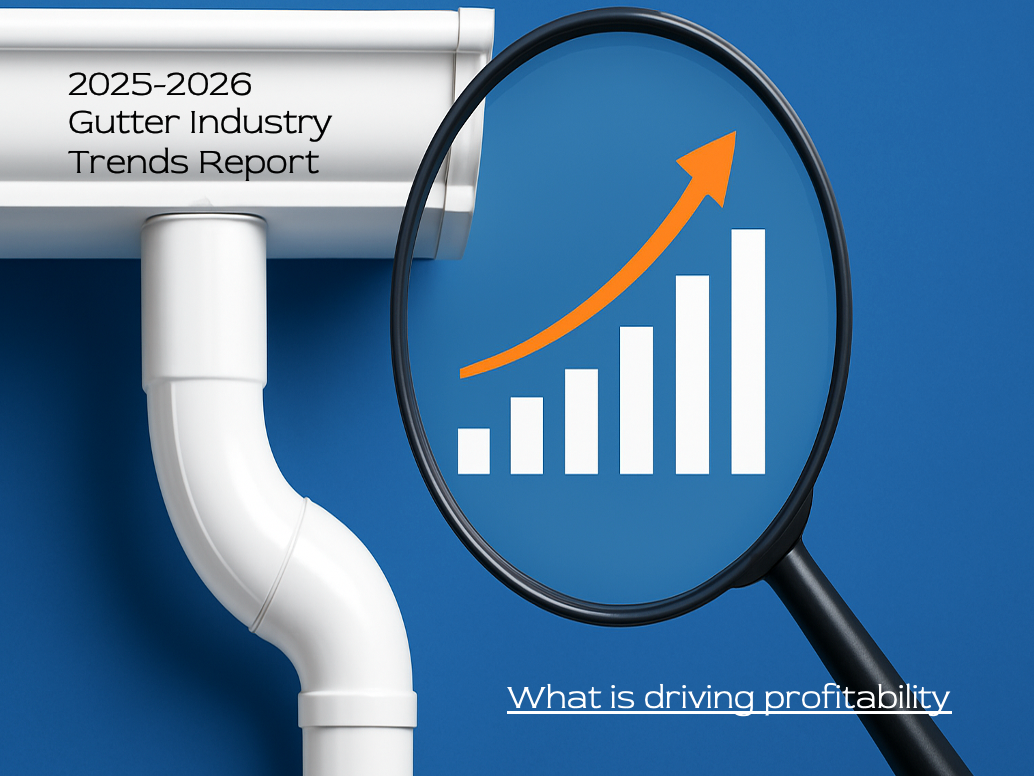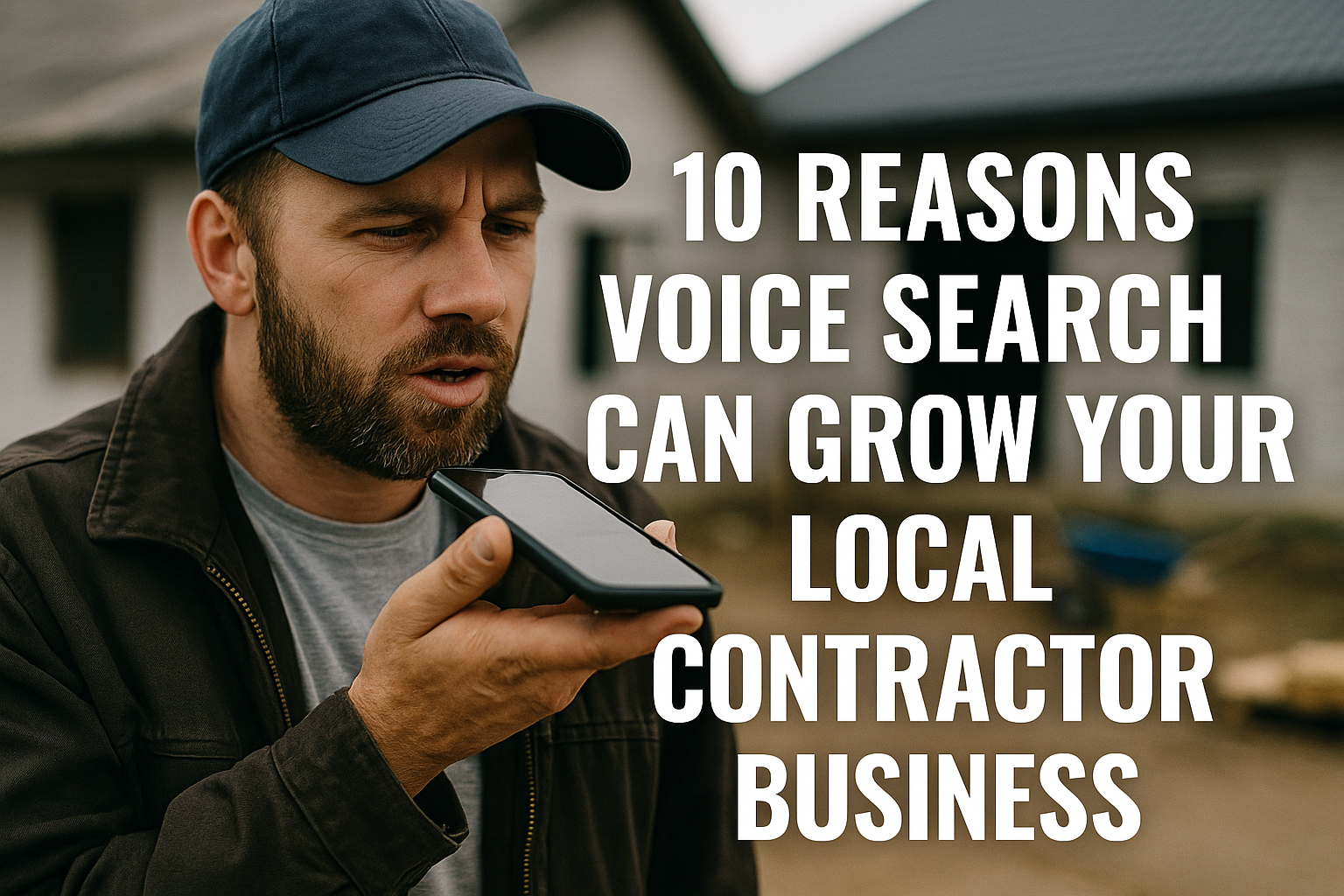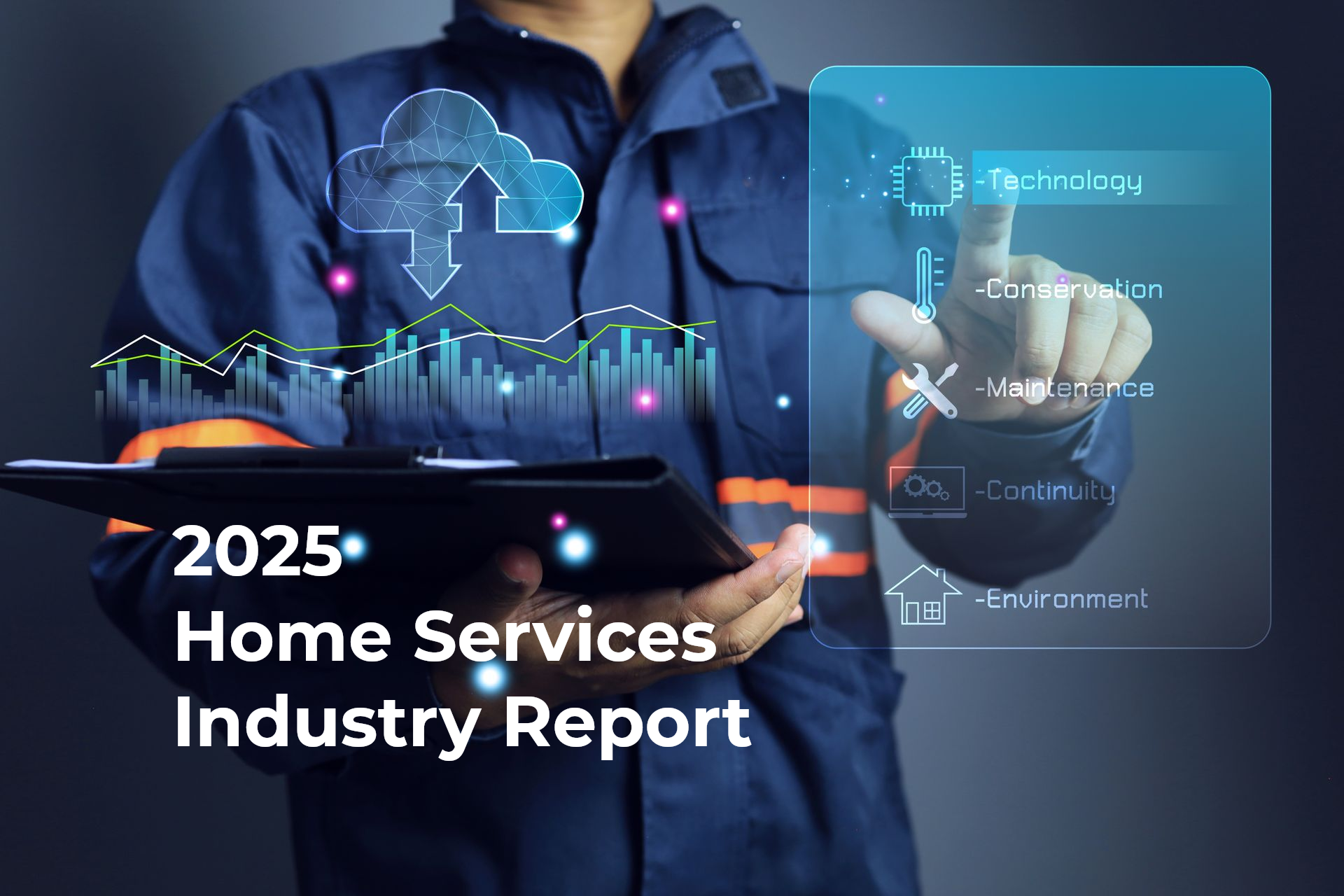120+ Marketing Acronyms
Never be confused when someone uses a marketing acronym ever again!
Will Schmidt - October 28, 2024
Marketing Acronyms Explained Article Summary
Marketing is packed with jargon—CTR, CPC, ROI, LTV—and half the time people nod along without really knowing what they mean. That’s why we built this guide: a complete breakdown of
123 marketing acronyms you’ll actually use in 2025 and beyond. Each acronym includes a clear definition, a correct use case, and a misuse example (so you don’t embarrass yourself by dropping it wrong in a meeting). Bookmark this list, share it with your team, and finally have every acronym decoded in one place.
Marketing Acronyms in alphabetical order
Marketing Acronyms (A-C: 18 total)
1. A/B Testing (Split Testing)
- Definition: A method of comparing two versions of a webpage, ad, or email to see which performs better.
- Correct Use: “We ran an A/B test on our gutter landing page—version B with a bigger CTA button had a 22% higher conversion rate.”
- Incorrect Use: “We did A/B testing by running Facebook ads one week and Google ads the next.” (That’s just platform switching, not a test.)
2. ABM (Account-Based Marketing)
- Definition: A B2B strategy that targets specific high-value accounts with personalized campaigns.
- Correct Use: “Our ABM campaign focused only on the top 10 construction companies in Ventura County.”
- Incorrect Use: “We used ABM for our Google Ads targeting homeowners.” (ABM is B2B, not consumer-focused.)
3. ACoS (Advertising Cost of Sale)
- Definition: A metric used in Amazon and ecommerce advertising. It’s ad spend divided by revenue.
- Correct Use: “Our Amazon gutter guard ads had a 20% ACoS, meaning we spent $0.20 for every $1 in sales.”
- Incorrect Use: “We calculated ACoS for our Yelp reviews.” (Reviews aren’t sales ads.)
4. API (Application Programming Interface)
- Definition: A tool that lets different software systems talk to each other. In marketing, APIs connect CRMs, ad platforms, and automation tools.
- Correct Use: “We used the Google Ads API to pull real-time data into our reporting dashboard.”
- Incorrect Use: “Our website runs on an API.” (Websites use code, not an API by default.)
5. ASP (Average Selling Price)
- Definition: The average price at which a product/service is sold.
- Correct Use: “Our ASP for gutter cleaning is $350, but with upsells, it increases to $500.”
- Incorrect Use: “ASP is how much profit we made.” (It’s about price, not margin.)
6. B2B (Business-to-Business)
- Definition: Selling products or services from one business to another.
- Correct Use: “TIP sells B2B marketing services to contractors, not directly to homeowners.”
- Incorrect Use: “We run B2B Facebook ads targeting homeowners.” (That’s B2C.)
7. B2C (Business-to-Consumer)
- Definition: Selling directly to end consumers.
- Correct Use: “A roofing company running Google Ads for ‘roof replacement’ is B2C.”
- Incorrect Use: “Our vendor partnerships are B2C.” (Those are B2B.)
8. BOFU (Bottom of Funnel)
- Definition: The stage in the marketing funnel where prospects are ready to buy.
- Correct Use: “Our BOFU ads included testimonials and a free estimate form.”
- Incorrect Use: “Posting memes on Instagram is BOFU.” (That’s top-of-funnel engagement, not BOFU.)
9. BR (Bounce Rate)
- Definition: The percentage of website visitors who leave without engaging further.
- Correct Use: “Our gutter blog had a 70% bounce rate, so we added internal links and lowered it to 45%.”
- Incorrect Use: “We measured bounce rate on our Facebook ads.” (Bounce rate is a web metric, not an ad metric.)
10. CAC (Customer Acquisition Cost)
- Definition: The cost of acquiring one new customer, including ads, sales, and marketing expenses.
- Correct Use: “Our CAC for gutter installations is $220, but each job averages $1,500 revenue.”
- Incorrect Use: “CAC is how much it costs to generate one lead.” (Lead ≠ customer.)
11. CMS (Content Management System)
- Definition: Software that lets you create, edit, and manage website content without coding.
- Correct Use: “We built our client’s roofing site on Duda, a CMS that makes updates easy.”
- Incorrect Use: “We used CMS for our email campaigns.” (Email platforms are not CMS.)
12. CPC (Cost Per Click)
- Definition: The amount paid each time someone clicks on your ad.
- Correct Use: “Our Google Ads CPC for ‘gutter installation Ventura’ is $8.50.”
- Incorrect Use: “Our CPC shows how much we spent overall.” (That’s total ad spend, not CPC.)
13. CPL (Cost Per Lead)
- Definition: The cost of generating one lead, whether from ads, SEO, or other channels.
- Correct Use: “We spent $2,000 and got 50 form submissions—CPL is $40.”
- Incorrect Use: “Our CPL is $2,000 this month.” (That’s spend, not cost per lead.)
14. CPM (Cost Per Mille / Thousand Impressions)
- Definition: The cost of 1,000 ad impressions. Common in display and social advertising.
- Correct Use: “Facebook charged us $12 CPM, meaning $12 for every 1,000 views.”
- Incorrect Use: “Our CPM tells us how many leads we got.” (CPM is about impressions, not leads.)
15. CRM (Customer Relationship Management)
- Definition: A platform that organizes customer data, sales pipelines, and interactions.
- Correct Use: “We use Google Sheets as a lightweight CRM for gutter clients.”
- Incorrect Use: “Our CRM is our website.” (A website isn’t a CRM—it’s a marketing asset.)
16. CTA (Call to Action)
- Definition: A prompt telling users what to do next (e.g., “Book a Free Estimate”).
- Correct Use: “Our landing page CTA ‘Get Your Free Roof Inspection’ boosted conversions.”
- Incorrect Use: “Our logo is our CTA.” (Logos are branding, not calls to action.)
17. CTR (Click-Through Rate)
- Definition: The percentage of people who click after seeing your ad, email, or link.
- Correct Use: “Our ad had a 7% CTR—70 people clicked out of 1,000 impressions.”
- Incorrect Use: “CTR shows how many sales we made.” (CTR measures clicks, not sales.)
18. CX (Customer Experience
- Definition: The overall perception a customer has of your brand from start to finish.
- Correct Use: “Improving CX with faster response times boosted referrals.”
- Incorrect Use: “CX is the same as customer service.” (CX is bigger—service is just one part.)
Marketing Acronyms (D-H: 19-49)
19. DCO (Dynamic Creative Optimization)
- Definition: Ad technology that automatically tests and serves the best-performing creative variations.
- Correct Use: “We used DCO in Facebook Ads to swap out headlines and images dynamically.”
- Incorrect Use: “We did DCO by making two static graphics in Canva.” (That’s manual, not dynamic optimization.)
20. DMA (Designated Market Area)
- Definition: A region defined by Nielsen or similar, used for media planning and targeting.
- Correct Use: “Our campaign targeted the Los Angeles DMA to reach homeowners in that broadcast region.”
- Incorrect Use: “DMA is our service area radius.” (A DMA is a broadcast/media region, not a chosen mileage radius.)
21. DNS (Domain Name System)
- Definition: The system that translates website domain names into IP addresses.
- Correct Use: “We updated our DNS records to connect the new website to the hosting server.”
- Incorrect Use: “DNS is the name of our domain registrar.” (Registrar sells domains; DNS routes them.)
22. DM (Direct Message)
- Definition: A private message on social media platforms.
- Correct Use: “We DM’d a prospect on LinkedIn to follow up after they liked our post.”
- Incorrect Use: “We sent a DM through email.” (Email ≠ DM.)
23. DMO (Destination Marketing Organization)
- Definition: Organizations promoting tourism and travel for a specific area.
- Correct Use: “Our ads targeting Reno tourists were co-funded by the local DMO.”
- Incorrect Use: “DMO is a digital marketing objective.” (Not correct—it’s an org, not a metric.)
24. DMP (Data Management Platform)
- Definition: Software that collects and organizes audience data for ad targeting.
- Correct Use: “Our DMP grouped audiences by behavior for retargeting campaigns.”
- Incorrect Use: “We used a DMP to design our website.” (That’s CMS, not DMP.)
25. DNSBL (Domain Name System Blacklist)
- Definition: A list of domains flagged for spam or bad reputation, used in email filtering.
- Correct Use: “Our emails weren’t delivering because the domain was on a DNSBL.”
- Incorrect Use: “We use DNSBL for ad tracking.” (It’s about email, not ads.)
26. DR (Domain Rating)
- Definition: An SEO metric by Ahrefs that measures backlink authority (0–100).
- Correct Use: “We built local backlinks to boost our DR from 25 to 40.”
- Incorrect Use: “DR shows how fast our site loads.” (That’s site speed, not DR.)
27. DSP (Demand-Side Platform)
- Definition: A system advertisers use to buy ad inventory programmatically.
- Correct Use: “We used a DSP to automate display ad bidding across multiple networks.”
- Incorrect Use: “DSP is our CRM.” (Not even close.)
28. DTC (Direct-to-Consumer
- Definition: Selling directly to end customers, skipping wholesalers/retailers.
- Correct Use: “That gutter guard company went DTC with ads straight to homeowners.”
- Incorrect Use: “Our B2B services are DTC.” (DTC is consumer-focused only.)
29. E-A-T (Expertise, Authoritativeness, Trustworthiness)
- Definition: Google’s quality guidelines for ranking content.
- Correct Use: “We added author bios to improve E-A-T on our roofing blogs.”
- Incorrect Use: “E-A-T is an SEO plugin.” (It’s a guideline, not software.)
30. EBITDA (Earnings Before Interest, Taxes, Depreciation & Amortization)
- Definition: A financial metric showing core profitability.
- Correct Use: “Our agency had $300k EBITDA last year.”
- Incorrect Use: “Our EBITDA was our revenue.” (It excludes costs, so not the same.)
31. EFO (Exit Form Optimization)
- Definition: Improving forms that appear when users attempt to leave a site.
- Correct Use: “We captured 12% more leads by running EFO pop-ups with discounts.”
- Incorrect Use: “EFO is the same as SEO.” (Totally different.)
32. EMM (Enterprise Mobility Management)
- Definition: Software to secure and manage employees’ mobile devices.
- Correct Use: “Our corporate EMM lets staff securely access CRM on phones.”
- Incorrect Use: “EMM is about email marketing metrics.” (Not at all.)
33. ESP (Email Service Provider)
- Definition: A platform for sending and managing email campaigns.
- Correct Use: “We run all nurture campaigns through our ESP, Mailchimp.”
- Incorrect Use: “ESP is what tells us open rates.” (That’s analytics, not the ESP itself.)
34. ETL (Extract, Transform, Load)
- Definition: A process in data integration—moving data between systems.
- Correct Use: “We used ETL to pull Google Ads data into our BI dashboard.”
- Incorrect Use: “ETL is our SEO software.” (Not true—it’s data engineering.)
35. FMCG (Fast-Moving Consumer Goods)
- Definition: Products with quick turnover, like snacks or toiletries.
- Correct Use: “FMCG brands rely heavily on retail promotions and packaging.”
- Incorrect Use: “Gutter installation is FMCG.” (It’s not consumer packaged goods.)
36. FOMO (Fear of Missing Out)
- Definition: A marketing tactic creating urgency or exclusivity.
- Correct Use: “We used FOMO by adding ‘Only 3 spots left this week!’ to our ad.”
- Incorrect Use: “FOMO is when customers complain.” (That’s dissatisfaction, not urgency.)
37. FTP (File Transfer Protocol)
- Definition: A method for transferring website files between servers.
- Correct Use: “We used FTP to upload a new plugin to the site.”
- Incorrect Use: “FTP is an SEO ranking factor.” (Nope.)
38. GA (Google Analytics)
- Definition: Google’s platform for tracking and analyzing website traffic.
- Correct Use: “GA showed 500 visits from our gutter ads last week.”
- Incorrect Use: “GA is Google Ads.” (Different products.)
39. GCLID (Google Click Identifier)
- Definition: A tracking parameter added to URLs for Google Ads.
- Correct Use: “We passed the GCLID into our CRM to track which ad generated the lead.”
- Incorrect Use: “GCLID is our campaign name.” (It’s a tag, not the campaign itself.)
40. GDN (Google Display Network)
- Definition: Google’s ad network of websites, apps, and videos.
- Correct Use: “We ran retargeting ads across the GDN to re-engage visitors.”
- Incorrect Use: “GDN is where we run search ads.” (Search is separate.)
41. GIF (Graphics Interchange Format)
- Definition: Animated image format often used in digital marketing.
- Correct Use: “We added a GIF to our social ad to increase engagement.”
- Incorrect Use: “GIF is a video file.” (It’s an image format, not video.)
42. GMB (Google My Business) → Now GBP
- Definition: Google’s free listing platform for local businesses (now Google Business Profile).
- Correct Use: “We optimized the GMB listing with reviews and photos.”
- Incorrect Use: “Our website is our GMB.” (Two separate things.)
43. GMT (Greenwich Mean Time)
- Definition: A time standard used for scheduling global campaigns.
- Correct Use: “Our email campaign launched at 8 AM GMT.”
- Incorrect Use: “GMT is our Google Tag Manager.” (Nope—different acronym.)
44. GTM (Google Tag Manager)
- Definition: A tool to manage and deploy marketing tags on a website.
- Correct Use: “We used GTM to install tracking pixels without editing code.”
- Incorrect Use: “We ran GTM ads on YouTube.” (That’s Google Ads, not GTM.)
45. H1 (Header 1 Tag)
- Definition: The main heading on a webpage, important for SEO.
- Correct Use: “Our homepage H1 is ‘Home Services Marketing Experts.’”
- Incorrect Use: “H1 is a website link.” (It’s a header tag, not a link.)
46. H2 (Header 2 Tag)
- Definition: Subheadings on a webpage that structure content under the H1.
- Correct Use: “We used H2s like ‘Local SEO’ and ‘Google Ads’ on the landing page.”
- Incorrect Use: “Our footer is an H2.” (Footers aren’t header tags.)
47. HTML (HyperText Markup Language
- Definition: The code that structures content on the web.
- Correct Use: “We edited the HTML to fix broken schema markup.”
- Incorrect Use: “HTML is the hosting server.” (Not at all.)
48. HTTP (Hypertext Transfer Protocol)
- Definition: The protocol for transferring data on the web.
- Correct Use: “Our site switched from HTTP to HTTPS for better security.”
- Incorrect Use: “HTTP is our domain name.” (No—it’s the transfer protocol.)
49. HTTPS (Hypertext Transfer Protocol Secure)
- Definition: The secure version of HTTP, with SSL/TLS encryption.
- Correct Use: “Google ranks HTTPS sites higher than HTTP.”
- Incorrect Use: “HTTPS is our hosting provider.” (Not correct.)
Marketing Acronyms (I-L: 50-66)
51. ICP (Ideal Customer Profile)
- Definition: A detailed description of your perfect-fit customer based on demographics, firmographics, and behaviors.
- Correct Use: “Our ICP is mid-sized roofing companies in LA County looking for growth marketing.”
- Incorrect Use: “ICP is the same as a persona.” (A persona is broader storytelling; ICP is sales-target precise.)
52. IDFA (Identifier for Advertisers)
- Definition: Apple’s identifier that lets advertisers track and target mobile users across apps.
- Correct Use: “Facebook Ads performance dropped after Apple restricted IDFA access.”
- Incorrect Use: “IDFA is a campaign type in Google Ads.” (Nope, it’s mobile tracking only.)
53. IG (Instagram)
- Definition: A visual-first social media platform used for brand awareness and engagement.
- Correct Use: “We posted behind-the-scenes IG reels to boost engagement.”
- Incorrect Use: “IG is a Google Ads metric.” (Not at all.)
54. IMC (Integrated Marketing Communications)
- Definition: A strategy that unifies brand messaging across multiple channels.
- Correct Use: “Our IMC plan aligned Facebook Ads, SEO blogs, and email campaigns around one offer.”
- Incorrect Use: “IMC is posting the same ad everywhere.” (It’s about coordination, not duplication.)
55. IoT Marketing (Internet of Things Marketing)
- Definition: Using connected devices to deliver targeted or contextual marketing.
- Correct Use: “A smart fridge recommending grocery brands is an IoT marketing example.”
- Incorrect Use: “IoT is another name for SEO.” (Completely different worlds.)
56. IP Targeting (Internet Protocol Targeting)
- Definition: Delivering ads to specific households or offices using their IP addresses.
- Correct Use: “We used IP targeting to show display ads to attendees of a trade show.”
- Incorrect Use: “IP targeting is buying backlinks.” (Not true—it’s ad placement tech.)
57. ISP (Internet Service Provider)
- Definition: In marketing, ISPs matter in email deliverability—Gmail, Yahoo, etc. filter campaigns.
- Correct Use: “Our emails bounced because major ISPs flagged our domain.”
- Incorrect Use: “ISP is an ad bidding strategy.” (Nope.)
58. IVR (Interactive Voice Response)
- Definition: Automated phone menu system used in lead handling and call campaigns.
- Correct Use: “Our IVR routes Google Ads calls to the right sales rep automatically.”
- Incorrect Use: “IVR is a social media metric.” (Not even close.)
59. KPI (Key Performance Indicator)
- Definition: A measurable goal that defines campaign success.
- Correct Use: “Our KPI is keeping cost per lead under $60.”
- Incorrect Use: “KPI is the name of our CRM tool.” (Nope, it’s a performance metric.)
60. KOL (Key Opinion Leader)
- Definition: Influencers or experts whose endorsement influences buying decisions.
- Correct Use: “We worked with a KOL on YouTube to review gutter guard installations.”
- Incorrect Use: “KOL is another word for keyword list.” (Not true.)
61. KWR (Keyword Research)
- Definition: The process of analyzing search terms to guide SEO and PPC campaigns.
- Correct Use: “Our KWR showed ‘metal roofing marketing’ has strong monthly volume.”
- Incorrect Use: “KWR is the cost of running Google Ads.” (That’s CPC/CPL, not KWR.)
62. LTV (Lifetime Value)
- Definition: The projected revenue a customer generates during their relationship with a business.
- Correct Use: “With upsells, the LTV of each customer rose from $2,500 to $5,000.”
- Incorrect Use: “LTV is how much one job pays.” (That’s job revenue, not long-term value.)
63. LLM (Large Language Model)
- Definition: AI systems (like ChatGPT) that generate text and insights—used in marketing automation and content.
- Correct Use: “We used an LLM to create ad copy variations for A/B testing.”
- Incorrect Use: “LLM is a LinkedIn ad metric.” (Not at all—it’s AI tech.)
64. LP (Landing Page)
- Definition: A standalone web page designed to capture leads or conversions.
- Correct Use: “Our LP with one focused CTA converted 30% better than the homepage.”
- Incorrect Use: “LP is our LinkedIn profile.” (Nope, totally different.)
65. LPO (Landing Page Optimization)
- Definition: Improving landing pages to increase conversions.
- Correct Use: “We ran LPO by testing new headlines and button colors.”
- Incorrect Use: “LPO is just running more ads.” (Optimization happens on the page, not the ad spend.)
66. LTV:CAC Ratio
- Definition: A comparison of lifetime value to customer acquisition cost—used to measure profitability.
- Correct Use: “Our LTV:CAC ratio is 4:1, meaning customers generate 4x their acquisition cost.”
- Incorrect Use: “LTV:CAC is our monthly ad budget.” (Not correct—it’s a profitability metric.)
Marketing Acronyms (M-P: 67-84)
67. MQL (Marketing Qualified Lead)
- Definition: A lead that has shown interest and meets criteria suggesting they’re more likely to become a customer.
- Correct Use: “The ebook download campaign produced 200 MQLs last month.”
- Incorrect Use: “Every website visitor is an MQL.” (Visitors aren’t qualified until they meet criteria.)
68. MRR (Monthly Recurring Revenue)
- Definition: Predictable, recurring revenue earned each month, often used in subscription or retainer-based marketing services.
- Correct Use: “Our agency’s MRR from SEO retainers is $40,000.”
- Incorrect Use: “MRR is our one-time project billing.” (That’s not recurring.)
69. MR (Market Research)
- Definition: The process of gathering and analyzing information about target markets and customers.
- Correct Use: “Our MR showed homeowners search for ‘roof repair near me’ more than ‘roofing contractor.’”
- Incorrect Use: “MR is the name of our marketing report.” (That’s a deliverable, not research itself.)
70. MSP (Marketing Service Provider)
- Definition: A company offering outsourced marketing services, often in digital marketing or automation.
- Correct Use: “We hired an MSP to manage our HubSpot campaigns.”
- Incorrect Use: “MSP is our hosting company.” (That’s Managed Service Provider, not marketing-focused.)
71. MVL (Most Valuable Lead)
- Definition: The lead type or source that generates the highest return on investment.
- Correct Use: “Google Ads generated our MVL because 80% converted to paid customers.”
- Incorrect Use: “MVL is the same as MQL.” (MQL is interest-based; MVL is revenue-based.)
72. NAP (Name, Address, Phone Number)
- Definition: The consistent business info critical for local SEO and directory listings.
- Correct Use: “Our NAP consistency boosted local map rankings.”
- Incorrect Use: “NAP is a type of ad copy.” (Not even close.)
73. NLP (Natural Language Processing)
- Definition: AI tech that interprets and generates human language—used in chatbots, search, and automation.
- Correct Use: “We used NLP to power our AI chatbot for lead capture.”
- Incorrect Use: “NLP is the same as SEO.” (They work together but aren’t the same.)
74. NPS (Net Promoter Score)
- Definition: A metric that measures customer loyalty by asking how likely they are to recommend you.
- Correct Use: “Our NPS survey scored 72, showing high customer satisfaction.”
- Incorrect Use: “NPS shows how many website visits we got.” (That’s traffic, not loyalty.)
75. OOH (Out-of-Home Advertising)
- Definition: Marketing that reaches consumers outside their homes—billboards, bus ads, posters.
- Correct Use: “We ran an OOH campaign with local billboards promoting free estimates.”
- Incorrect Use: “OOH is online-only advertising.” (It’s physical, not digital.)
76. ORM (Online Reputation Management)
- Definition: Strategies to control and improve how a brand appears online through reviews, content, and search.
- Correct Use: “We launched an ORM campaign to respond to reviews and improve ratings.”
- Incorrect Use: “ORM is another name for SEO.” (They overlap but aren’t identical.)
77. OTT (Over-the-Top)
- Definition: Advertising delivered via streaming platforms that bypass traditional TV (Hulu, Roku, YouTube TV).
- Correct Use: “We ran OTT ads targeting homeowners watching local news on Roku.”
- Incorrect Use: “OTT is just YouTube ads.” (It includes broader streaming networks.)
78. PII (Personally Identifiable Information)
- Definition: Data that identifies an individual—name, email, phone—relevant in privacy-compliant marketing.
- Correct Use: “We encrypted all PII collected from our lead forms.”
- Incorrect Use: “PII is a performance metric.” (It’s privacy, not performance.)
79. PPC (Pay-Per-Click)
- Definition: An advertising model where advertisers pay each time someone clicks their ad.
- Correct Use: “Our PPC campaign on Google Ads produced 60 leads.”
- Incorrect Use: “PPC is free social media posting.” (That’s organic, not paid.)
80. PPL (Pay-Per-Lead)
- Definition: A pricing model where businesses pay for each lead generated instead of clicks or impressions.
- Correct Use: “The directory site charges $40 PPL for roofing leads.”
- Incorrect Use: “PPL is the same as PPC.” (One is per lead; the other is per click.)
81. PPM (Pay-Per-Mille / Thousand Impressions)
- Definition: The cost of serving 1,000 ad impressions, similar to CPM.
- Correct Use: “Our LinkedIn PPM was $35, making it more expensive than Facebook CPM.”
- Incorrect Use: “PPM is a lead cost.” (It measures impressions, not conversions.)
82. PR (Public Relations)
- Definition: Managing brand reputation and relationships with media, customers, and the public.
- Correct Use: “We issued a PR release about our new service launch.”
- Incorrect Use: “PR is just running Facebook ads.” (Paid media ≠ PR.)
83. PRO (PageRank Optimization)
- Definition: SEO efforts focused on increasing authority and visibility in search rankings.
- Correct Use: “We built backlinks for PRO to increase domain authority.”
- Incorrect Use: “PRO is an ad bidding strategy.” (It’s search-focused.)
84. PWA (Progressive Web App)
- Definition: A website that functions like an app, with offline access and push notifications.
- Correct Use: “Our marketing team built a PWA for easier mobile engagement.”
- Incorrect Use: “PWA is a paid ad format.” (It’s web/app tech.)
Marketing Acronyms (Q-S: 85-100)
85. QA (Quality Assurance)
- Definition: Processes to ensure marketing deliverables meet standards before launch.
- Correct Use: “Our QA caught broken links on the landing page before ads went live.”
- Incorrect Use: “QA is the same as A/B testing.” (Testing compares versions; QA ensures functionality.)
86. QC (Quality Control)
- Definition: Monitoring and reviewing campaign performance to ensure results align with expectations.
- Correct Use: “We ran QC on email campaigns to confirm subject lines didn’t trigger spam filters.”
- Incorrect Use: “QC is campaign optimization.” (It’s checking accuracy, not changing strategy.)
87. QR Code (Quick Response Code)
- Definition: A scannable barcode that directs users to digital destinations like websites or offers.
- Correct Use: “We added a QR code to our flyers to drive traffic to the gutter estimate page.”
- Incorrect Use: “QR code is a type of tracking pixel.” (Not the same.)
88. QoQ (Quarter-over-Quarter)
- Definition: A metric comparing business or marketing performance between quarters.
- Correct Use: “Leads increased 15% QoQ after we launched Google Ads.”
- Incorrect Use: “QoQ is the same as YoY.” (YoY is year-over-year, not quarter.)
89. QR (Qualified Reach)
- Definition: The portion of ad impressions delivered to a targeted, relevant audience.
- Correct Use: “Our QR improved after refining negative keywords in Google Ads.”
- Incorrect Use: “QR is the number of clicks.” (Clicks measure action, not audience targeting.)
90. RTB (Real-Time Bidding)
- Definition: Automated auction process for buying and selling ad impressions online.
- Correct Use: “We used RTB to buy display ad space on news sites at scale.”
- Incorrect Use: “RTB is manual ad placement.” (It’s automated bidding.)
91. SaaS (Software as a Service)
- Definition: Subscription-based software delivered over the internet, often with marketing tools.
- Correct Use: “HubSpot is a SaaS platform for inbound marketing.”
- Incorrect Use: “SaaS is a type of campaign.” (It’s software, not a tactic.)
92. SAM (Serviceable Available Market)
- Definition: The segment of the total market a company can realistically serve.
- Correct Use: “Our SAM for roofing in Ventura County is $30M annually.”
- Incorrect Use: “SAM is the same as TAM.” (TAM is the total market; SAM is what you can serve.)
93. SEM (Search Engine Marketing)
- Definition: Paid advertising on search engines to drive traffic.
- Correct Use: “SEM drove 50 leads last month from Google Ads.”
- Incorrect Use: “SEM is blog writing.” (That’s SEO, not SEM.)
94. SEO (Search Engine Optimization)
- Definition: The practice of improving website content and structure to rank higher in organic search.
- Correct Use: “SEO improvements doubled our contractor leads from Google.”
- Incorrect Use: “SEO is paying for ads.” (That’s SEM/PPC, not SEO.)
95. SERP (Search Engine Results Page)
- Definition: The page search engines display after a query.
- Correct Use: “Our page captured a SERP featured snippet for ‘best gutter guards.’”
- Incorrect Use: “SERP is an ad tool.” (It’s the results page itself.)
96. SMM (Social Media Marketing)
- Definition: Promoting brands, products, or services via social platforms.
- Correct Use: “Our SMM plan increased engagement on Facebook and LinkedIn.”
- Incorrect Use: “SMM is search engine marketing.” (Totally different.)
97. SMP (Social Media Platform)
- Definition: A channel for hosting and engaging with user-generated content.
- Correct Use: “TikTok is the fastest-growing SMP for contractors.”
- Incorrect Use: “SMP is a campaign type.” (No—it’s the channel itself.)
98. SMS (Short Message Service)
- Definition: Marketing delivered through text messages to mobile phones.
- Correct Use: “We used SMS reminders to cut no-shows for roof inspections.”
- Incorrect Use: “SMS is an SEO tool.” (It’s mobile messaging, not search.)
99. SOV (Share of Voice)
- Definition: A brand’s visibility versus competitors in ads or organic placements.
- Correct Use: “Increasing bids improved our SOV in local Google Ads.”
- Incorrect Use: “SOV is the number of social shares.” (It’s visibility, not likes.)
100. SQL (Sales Qualified Lead)
- Definition: A lead vetted as ready for direct sales engagement.
- Correct Use: “We handed 15 SQLs to the sales team from last month’s campaigns.”
- Incorrect Use: “SQL is a database language in this context.” (In marketing, it’s a lead stage.)
Marketing Acronyms (T-V: 101-115)
101. TAM (Total Addressable Market)
- Definition: The total revenue opportunity available if a business captured 100% of its potential market.
- Correct Use: “Our TAM for residential gutter installs in California is estimated at $5B.”
- Incorrect Use: “TAM is the same as SAM.” (TAM is total; SAM is the serviceable portion.)
102. TOFU (Top of Funnel)
- Definition: The awareness stage of the buyer’s journey, where prospects first discover your brand.
- Correct Use: “Blogs and YouTube videos are TOFU content that attracts new visitors.”
- Incorrect Use: “TOFU is where we close deals.” (Closing happens later in the funnel.)
103. TTFB (Time to First Byte)
- Definition: A web performance metric measuring how long it takes for a browser to receive the first byte of data from a server.
- Correct Use: “Improving TTFB sped up our landing page load times.”
- Incorrect Use: “TTFB is the same as page views.” (It’s site speed, not traffic.)
104. TTL (Time to Live)
- Definition: A setting that determines how long data, like cached DNS records, remain valid before refreshing.
- Correct Use: “We updated TTL values to make site changes appear faster.”
- Incorrect Use: “TTL measures how long a user stays on a page.” (That’s time on site, not TTL.)
105. TVR (Television Rating)
- Definition: A percentage metric that measures how many households watch a program compared to the total possible audience.
- Correct Use: “Our TV ad buy had a 12% TVR in the local market.”
- Incorrect Use: “TVR is our ad conversion rate.” (It’s a TV audience metric, not sales.)
106. UGC (User-Generated Content)
- Definition: Content created by customers or fans rather than the brand itself.
- Correct Use: “We reposted UGC photos of happy clients showing off their new roofs.”
- Incorrect Use: “UGC is just stock photography.” (Stock photos are not user-created.)
107. UI (User Interface)
- Definition: The design and layout users interact with on a website or app.
- Correct Use: “We simplified our UI so customers could book estimates faster.”
- Incorrect Use: “UI is the same as UX.” (UI is interface design; UX is the overall experience.)
108. UIM (Universal ID Management)
- Definition: Technology that helps marketers unify customer IDs across multiple platforms for tracking and personalization.
- Correct Use: “UIM allowed us to recognize users across devices.”
- Incorrect Use: “UIM is just logging into Facebook.” (It’s backend identity resolution, not social login.)
109. URL (Uniform Resource Locator)
- Definition: The web address of a resource on the internet.
- Correct Use: “We optimized the URL /gutter-installation-ventura for local SEO.”
- Incorrect Use: “URL is the same as domain authority.” (No—it’s just the address.)
110. USP (Unique Selling Proposition)
- Definition: The clear differentiator that makes a brand stand out from competitors.
- Correct Use: “Our USP is territory exclusivity for contractor marketing.”
- Incorrect Use: “USP is the same as pricing.” (It’s your unique value, not your cost.)
111. UV (Unique Visitor)
- Definition: A web analytics metric counting individuals who visit a site within a period, regardless of how many times.
- Correct Use: “We had 4,500 UVs last month from organic search.”
- Incorrect Use: “UV measures page speed.” (It’s about audience count, not performance.)
112. UX (User Experience)
- Definition: The overall interaction and satisfaction a user has with a website, product, or service.
- Correct Use: “Improving UX with clearer CTAs boosted conversions.”
- Incorrect Use: “UX is the same as UI.” (UI is one part of UX.)
113. VAR (Value-Added Reseller)
- Definition: A business that resells software or services with additional features or support.
- Correct Use: “The VAR bundled CRM software with setup and training for contractors.”
- Incorrect Use: “VAR is our return on ads.” (No—it’s a sales channel, not a metric.)
114. VOD (Video on Demand)
- Definition: Video content delivered digitally, allowing users to watch at any time.
- Correct Use: “We launched VOD ads on Hulu to reach homeowners during primetime.”
- Incorrect Use: “VOD is a YouTube live stream.” (That’s live, not on demand.)
115. VR (Virtual Reality)
- Definition: Immersive, computer-generated environments experienced with headsets or devices.
- Correct Use: “A VR demo let homeowners visualize new gutters on their house.”
- Incorrect Use: “VR is just 360° photos.” (It’s interactive immersion, not static media.)
Marketing Acronyms (W-Z: 116-123
116. WAU (Weekly Active Users)
- Definition: A metric tracking the number of unique users engaging with a product or service weekly.
- Correct Use: “Our CRM tool reported 1,200 WAU this week.”
- Incorrect Use: “WAU is total downloads.” (No—it’s active usage, not installs.)
117. WOM (Word of Mouth)
- Definition: Organic sharing of a brand, product, or service through customer conversations.
- Correct Use: “Positive reviews generated WOM that boosted referrals.”
- Incorrect Use: “WOM is our paid ad campaign.” (It’s unpaid and organic.)
118. WOMM (Word of Mouth Marketing)
- Definition: Strategies designed to encourage and amplify customer recommendations.
- Correct Use: “We launched a referral program to drive WOMM.”
- Incorrect Use: “WOMM is running Google Ads.” (That’s paid advertising, not organic sharing.)
119. WYSIWYG (What You See Is What You Get)
- Definition: A content editor where the final output matches what you see while editing.
- Correct Use: “Duda’s WYSIWYG editor lets us design contractor sites without coding.”
- Incorrect Use: “WYSIWYG is an SEO metric.” (It’s an editing tool, not analytics.)
120. XML (Extensible Markup Language)
- Definition: A structured format for storing and transporting data, often used for sitemaps.
- Correct Use: “We submitted an XML sitemap to Google Search Console.”
- Incorrect Use: “XML is a type of backlink.” (It’s file formatting, not linking.)
121. YoY (Year-over-Year)
- Definition: A comparison of performance metrics across the same period in different years.
- Correct Use: “Our YoY revenue from gutter marketing grew 32%.”
- Incorrect Use: “YoY is the same as QoQ.” (Quarterly vs. yearly comparison.)
122. YTD (Year-to-Date)
- Definition: A cumulative measure of performance from the start of the year until now.
- Correct Use: “We generated 450 leads YTD for roofing contractors.”
- Incorrect Use: “YTD is forecasted sales.” (It’s actual results to date, not projections.)
123. ZMOT (Zero Moment of Truth)
- Definition: The online research moment when a customer decides to buy or not buy.
- Correct Use: “Most homeowners hit ZMOT after reading Google reviews.”
- Incorrect Use: “ZMOT is the same as TOFU.” (TOFU is early awareness; ZMOT is decision point.)
TIP knows these acronyms but we use plain language
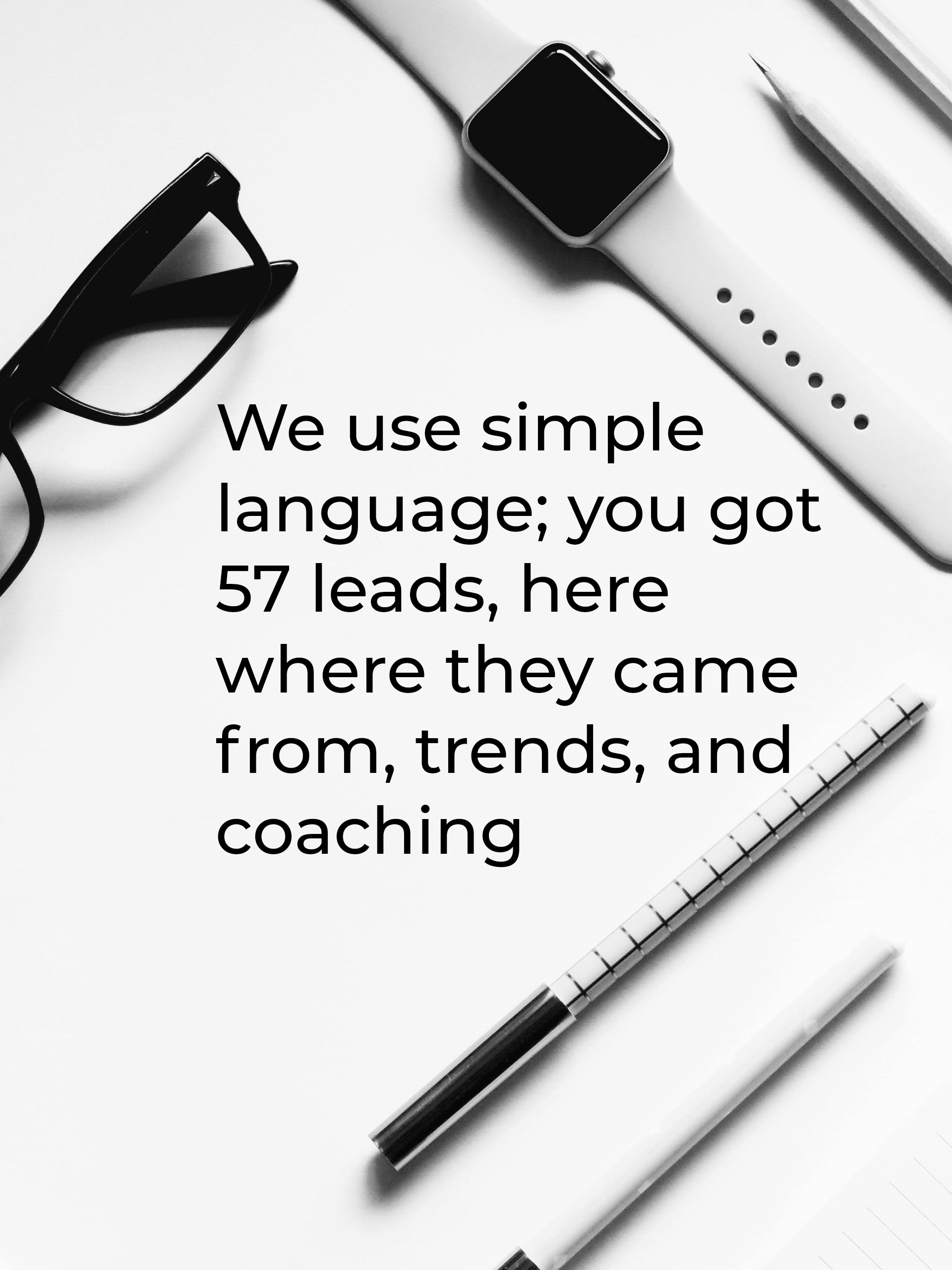
At Talents Into Profits (TIP), we know every one of these 123 marketing acronyms inside and out—but here’s the thing: we don’t hide behind jargon. Our job isn’t to impress you with buzzwords; it’s to grow your business. We focus on what actually matters: generating qualified leads, showing you exactly where they came from, and breaking down trends and projections in plain English. More importantly, we coach you on how to work with us so we can maximize every campaign together. Because at the end of the day, marketing acronyms don’t build businesses—results do.
Want to Grow your Business Faster?
As part of our
Chief Strategy Officer Program, we offer full branding, business setup and development, marketing, reputation management, and more! Just book a call with today.
About the author
Will Schmidt
Will Schmidt, Founder and Owner of Talents Into Profits (TIP), has helped over 150 businesses across 17 different industries, including home services, healthcare, and SaaS, generating more than $11 billion in lifetime sales. His experience in providing branding, marketing, websites, and lead generation based on operational capacities has enabled his clients to continually see 20-50x monthly ROI for services rendered.
Subscribe to Blog
Sign up to get industry insights, trends, and more in your inbox.
Contact Us
We will get back to you as soon as possible.
Please try again later.
Book Free Consult
Join me for a 30-45 minute call to review how to grow your contractor business faster, more affordably, and easier.
SHARE THIS
